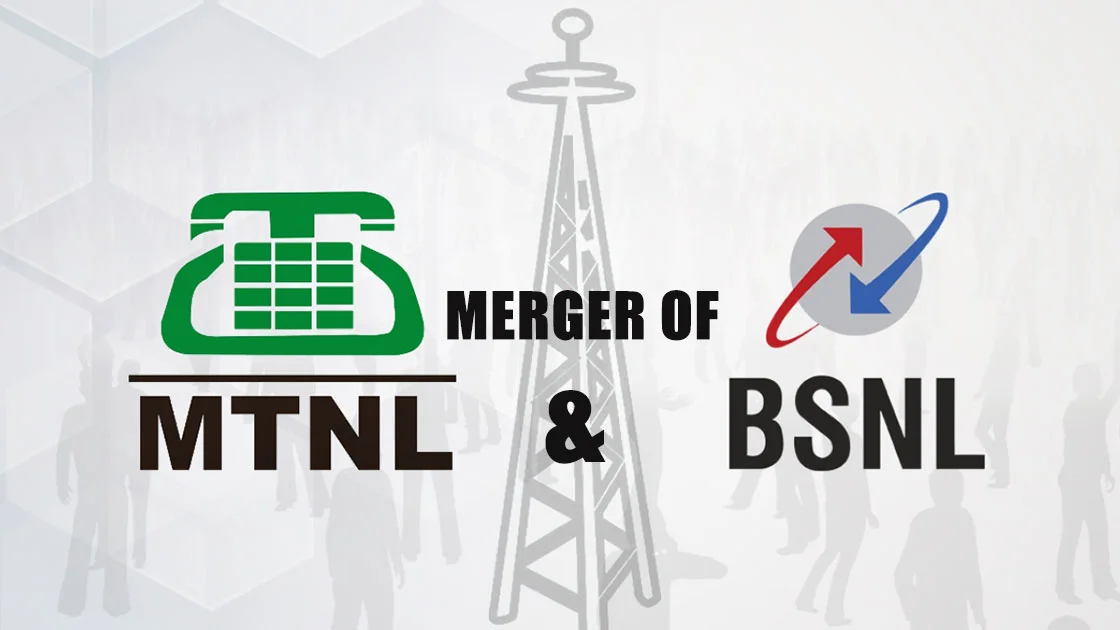The government has decided to merge the two PSUs – BSNL and MTNL.
The move clearly indicates the willingness of the government to boost up the loss-making undertakings as well as reassures the importance of the two telecom companies. The Bharat Sanchar Nigam Limited and Mahanagar Telephone Nigam Limited as known to everyone, were running in heavy losses with problems such as delayed payments to the employees among others. So, what led these PSUs to such conditions?

There are several reasons for this, firstly the companies suffered major setback with the entry of private players and wireless telephony in the year 1990. Stiff competition among several private companies and changes in tariffs leading to rapid decrease in costs among them resulted in the decline of these PSUs. Also, BSNL was operating under huge cost vastly due to increased expenditure and declining revenues. The BSNL and MTNL collectively employ around 1.86 lakh employees whose salaries account for nearly 75% of the total revenue in contrast with the private counterparts who spend around 3-5% of the total revenue earned on salaries. Therefore all in all it was a huge loss-making setup for the government which either required shutting down or disinvestment.
Visit our store at http://online.ensemble.net.in
The solution adopted by the Department of Telecommunications is a balanced way out of the problem which has considered nearly all major issues. A four-step revival plan was proposed by DoT –
- The government will try to make the companies competitive by putting in 29,937 crores.
- It will also raise Rs. 15000 crores through sovereign bonds and monetise assets worth 38,000 in four years.
- 4G spectrum will be allocated to the BSNL and MTNL at 2016 prices.
- Government will offer VRS- voluntary retirement scheme for employees of age above 50 years such that if employees at the age of 53 and half years opt for VRS, they will get 125% remuneration of salary, pension and gratuity till the age of 60.
It is important to be back in the race by making the PSUs competitive, raising the bonds and putting in funds will help in coming out of the borrowing pattern

and the financial distress. Especially, after the coming of Jio the situation has worsened in the market for these PSUs. However, instead of allocating the 4G spectrum, which is already common in the market, the plan could have incorporated the latest upcoming 5G spectrum which would have been a new option in the market and would attract new customers. Nevertheless, even switching to 4G, for time-being might help. Regarding the VRS scheme, the government has touched the idea of incorporating young workforce and also cut-short the huge number of employees. Around 1 lakh out of the 1.5 lakh employees are eligible for this scheme. It has been reported that nearly 70,000 employees have already opted for the VRS. Through this, it is estimated that around 7000 crore would be saved. Although, the VRS is completely voluntary and will not be forced upon anyone.
Secondly, it is important to address the very fact that the DoT instead of shutting down or disintegrating or disinvesting the undertakings chose to merge them. This step will impact the livelihoods of hundreds of employees currently working in the companies. It is a known fact that BSNL and MTNL have had a legacy of being a job-provider. In addition to this, BSNL is the major source of connectivity in the remote areas of the country where private networks have not been able to reach. Therefore, it was an imperative that it kept running. Furthermore, BSNL is known to provide the much-needed connectivity during natural disasters. It has been a strategic asset for the government to provide secure network services to the intelligence and the armed forces. However, it is not an easy game to play, unlike the earlier merger of banks since both BSNL and MTNL are running in loss. On the contrary, the successful revival of this plan will have momentous implications, especially at a time when two of the three private players are under the burden of government bill of Rs 75,000 crores.
